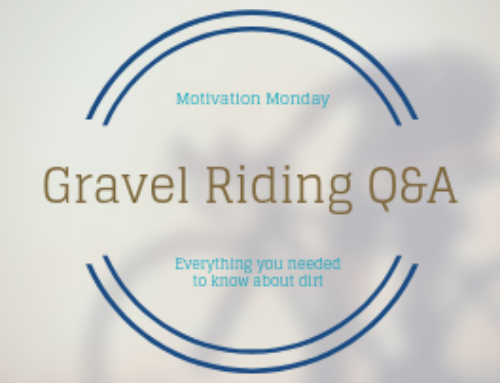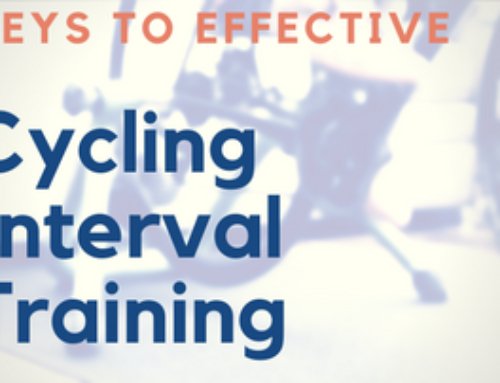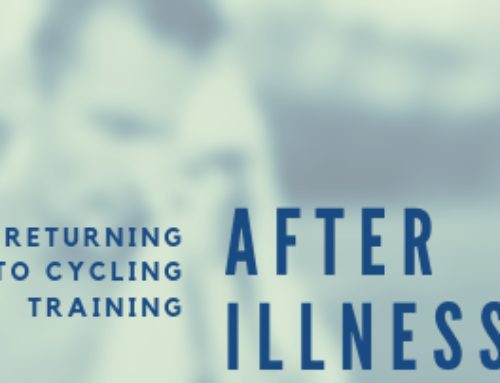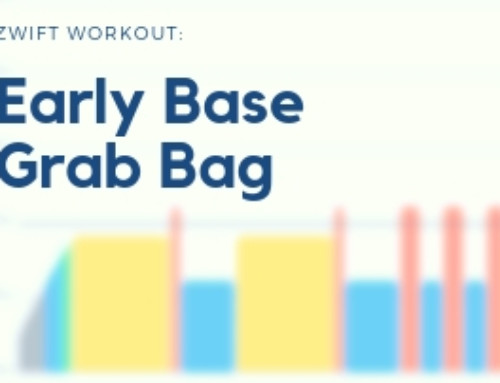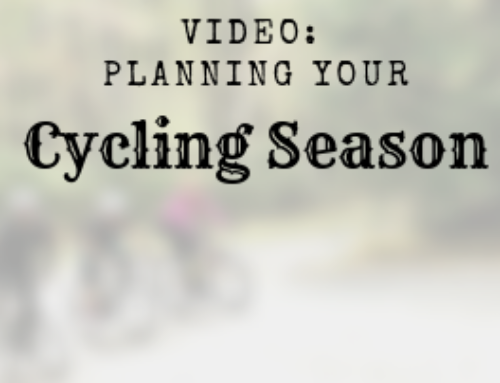The base building phase is more than just long miles and zone 2 efforts in the cold (if you want to know why check out my podcast on why cyclists don't need traditional base training.) To properly set yourself up for success next year, you'll want to put together a complete functional cycling base of fitness that you can build upon and carry through the entire cycling season.
True functional cycling base fitness prepares your body for harder efforts later in the year. It is vital to a long, prosperous riding season. Here's an example: If you think of your fitness like a house with a weak foundation, you know it won't last for years upon years. Without that solid functional foundation, your performance fitness will crumble over the course of the season no matter how much you try to train.
Click through for my 5 secrets of building a functional cycling base, share them with your friends and teammates and get on your way to your strongest season ever. And since not everyone is comfortable with planning their own training, you can scroll down for a discount code that will make it even more affordable to follow one of my downloadable training plans.
Functional Cycling Base Secret #1: Hit The Gym
It may or may not be a secret to you, but strength training can add a lot of power and endurance to your cycling. Spending some time in the gym will build strength through a number of different physiological pathways.
On the muscle fiber side of things, your muscles will increase their maximal and sub-maximal contractile force, allowing you to put more force into each pedal stroke. More force input results in more power, since power is force x time. Your body accomplishes this in a number of ways, but one of the most easily recognized is an increase in muscle fiber cross-sectional area. That's just a fancy way of saying your muscles “get bigger.” The larger muscle fibers contain more contractile elements which, in turn, produces more force when they contract.
On the nervous system side of things, your body will build neuromuscular efficiency through weight training in the gym. This is especially prominent with heavy weight training. An increase motor unit coordination, or how efficiently your muscle fibers contract together, is one of the end results of lifting heavy loads. The more coordinated the contraction between motor units, the more efficient (and more powerful) the muscle contraction. This more efficient and powerful the contraction results in a more powerful your pedal stroke. On top of increased coordination, your body will learn to recruit more fibers when you need them, which will also result in increased power to the pedals.
Finally, those training sessions in the gym will build muscular endurance and build fatigue resistance. This helps prevent cramps due to overuse and allows you to ride further and faster throughout the season.
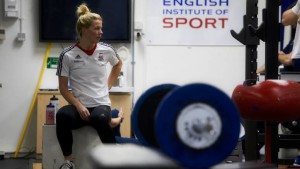 The problem with strength training is that most people aren't very familiar with strength workouts and tailoring them to a cyclist needs special consideration. You can add strength by just adding a few simple moves to your weekly training sessions, or you can leave the planning to me and pick up my Raw Strength training program if you're interested in adding strength training to your functional cycling base.
The problem with strength training is that most people aren't very familiar with strength workouts and tailoring them to a cyclist needs special consideration. You can add strength by just adding a few simple moves to your weekly training sessions, or you can leave the planning to me and pick up my Raw Strength training program if you're interested in adding strength training to your functional cycling base.
Functional Cycling Base Secret #2: Train Core Stability and Flexibility
I've written (and podcasted) a lot about the importance of core stability for cyclists. Without sufficient core stability your body will break down over the course of a longer ride and you'll find yourself pedaling squares. You'll probably also suffer from back pain, neck pain or the inability to ride with any significant power. This is because your core is the one thing that ties your legs together and ties your upper body to your legs. Without the stability of the core, your legs have nothing to push off of and any power generated by leveraging your bars will be lost energy instead of going into the pedals (sprinters, I'm looking at you right now.)
Flexibility is a close second in terms of importance for cycling fitness and power. It doesn't matter how strong your body is if it can't move smoothly through the ranges of motion necessary to pedal. If your joints aren't able to freely move through a functional range of motion, your muscles will expend extra energy to move those joints. Muscular coordination will be compromised by the lack of mobility, leading to a loss of power. Poor coordination and excessive joint restriction can risk injuring muscles, tendons, and ligaments. Think of folks who have muscle pulls or hip and knee pain: I'd bet most of them have some pretty poor ankle, hip and knee mobility.
If you want to get your core strength and stability in order, I've got the solution: my Unbreakable Core Stability module, which will give you scalable core stability training for all your training needs. For those of you who are finding your bodies stiff, painful and restricted, I'm a big fan of Max Shank's mobility flows, and I'm currently working on my own downloadable, video-driven program to help you stay loose and limber.
Functional Cycling Base Secret #3: Muscular Endurance
It wouldn't be an article about functional cycling base without talking about muscular endurance. If you're a regular reader or listener to my podcasts, this secret really shouldn't be a secret to you. For many cyclists, however, increasing your muscular endurance is the single biggest skill that transforms their riding. I see it with everyone from beginners to 20-year veterans of the sport: muscular endurance training builds a stronger cyclist.
Muscular endurance should be one of the cornerstones of any training program. The increased time under tension provided by muscular endurance (or ME) will give your muscles the ability to handle higher work loads and longer, more intense rides. The simple cornerstone principle of increasing the muscle's ability to provide energy under tension will also make your body more fatigue resistant and less likely to break down as you tackle longer, harder rides and races. This fatigue resistance is important so you can increase your workload later in the season and perform more specific, targeted training intervals.
If you're not sure where to start building muscular endurance, try adding 1 day of 2×20 minutes at sweetspot intensity, 70 RPM or less to your training (8 minutes rest in between intervals.) In 4-6 weeks, you'll see a big difference in how strong your legs are after some harder rides. If you want some help with building your muscular endurance, remember that ME is a cornerstone of my training programs. It is the key to developing big fitness with my full season training solution and advanced full season training solution.
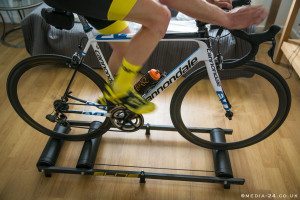 Functional Cycling Base Secret #4: Neuromuscular Development
Functional Cycling Base Secret #4: Neuromuscular Development
Once you've trained your body to produce a lot of power through strength training in the gym and ME style intervals on the bike, you have to effectively apply that power to the pedals. You need to be able to turn those pedals over quickly to put out more power and you do that by putting some time into neuromuscular development. Neuromuscular development happens when you start challenging your body to coordinate muscle contractions and fire muscles in an efficient fashion.
Like ME work, neuromuscular development is crucial to effective training. If you want to go fast, you have two options to make more power: either spin the pedals faster or push the pedals harder. OR….both! The best time trialists in the world can push huge gears at incredible cadences. Track racers push enormous gears at insane cadences sometimes. It's no coincidence that they tend to be highly efficient riders who put out a lot of power: it takes practice. I train neuromuscular efficiency drills in my base module and advanced base module as well as my full season training solutions to improve your pedaling efficiency and muscle fiber recruitment. With that improved efficiency you'll see faster speeds with less fatigue, and you'll develop a smooth, supple pedal stroke that will utilize more of your muscle fibers during each pedal stroke.
If you want to build that neuromuscular efficiency, try adding a day or two per week of 6×1 minute superspins to your workouts (1 minute rest between each interval.) You're looking to rev up a small gear to your maximum cadence (still in control, not bouncing on the saddle) and hold it there. Given 4 to 6 weeks of superspin training, you'll see your maximum cadence increase, your power will increase and you'll find yourself able to ride longer with less fatigue. If you're not sure how to add neuromuscular work to your training, I can get that done for you with my base plan and advanced base plan.
Functional Cycling Base Secret #5: High Intensity Interval Training
As I talked about in Tailwind Coaching Podcast #66, high intensity interval training is essential to raise the ceiling on your fitness. Without raising your fitness ceiling, you'll have no room to improve. With all the interest in Functional Threshold Power and increasing it, many cyclists miss this most important aspect of high intensity interval work.
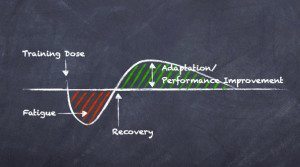 You have to focus on raising your VO2 max (or the ceiling on your fitness) before you start trying to raise FTP, otherwise all those threshold intervals will get you nowhere. For example, if your FTP is simply a percentage of VO2 max, without raising your VO2 you can't continue to improve your FTP.
You have to focus on raising your VO2 max (or the ceiling on your fitness) before you start trying to raise FTP, otherwise all those threshold intervals will get you nowhere. For example, if your FTP is simply a percentage of VO2 max, without raising your VO2 you can't continue to improve your FTP.
Unfortunately, VO2 max intervals aren't fun, but they do provide big gains in a short period of time (which is the perfect complement to your functional cycling base.) To round out your functional base training, work in one day of 3×8 minute intervals at 110% of your FTP (with 5 minutes rest between.) You can even vary things a little bit and do 5×5 minute intervals at 115% FTP (4 minutes rest between.) These interval durations and intensities correlate well with the average length of many hill climbs, making them easy to plan into outdoor riding. Suffer with these for 4-6 weeks you'll notice some definite improvement in hill climb times and FTP growth.
Now that you have the 5 secrets of functional cycling base training, what are you waiting for? Add those workouts to your weekly training or check out my downloadable training plans or consider some one-on-one coaching to help you implement these techniques properly. You can even take 25% off any of my training plans when you enter the discount code “BUILDMOREBASE” at checkout. And don't forget to click the links on the left side of the page to share with your friends.

